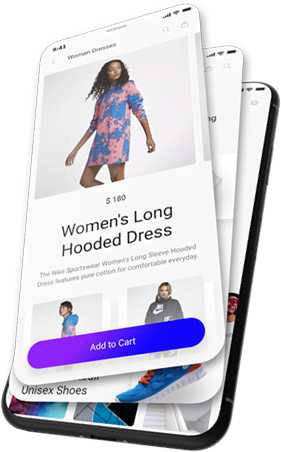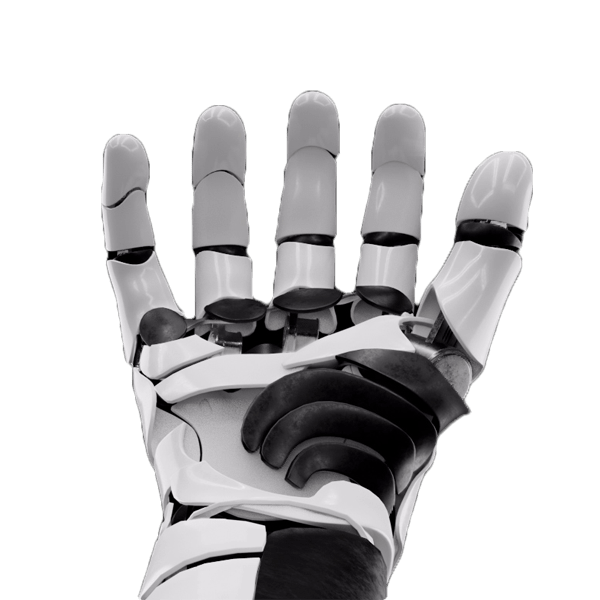The Calm Advantage Starts Now
You can double, maybe even triple, your profits this Black Friday and Cyber Monday (BFCM) 2025. But not by recycling last year’s playbook. And definitely not by scrambling the week before. This isn’t about going viral on TikTok or chasing trends for clicks. It’s a field guide built from what actually worked in 2024: tested strategies from expert retailers, sharpened for the market ahead, and broken down so you can use them early, calmly, and profitably.
Because last year, while global e-commerce smashed records with $41.1 billion in sales, many brands quietly lost money. They overspent, overpromised, and underperformed. CPMs rose by up to 40%, ad fatigue set in, and consumers, jaded by endless “best deals ever”, clicked less, bounced more, and trusted less. The brands that scaled profitably weren’t louder. They were earlier. They were ready.
In 2025, the brands that win won’t be the flashiest, they’ll be the ones who treated June like their real November. The ones who mapped their margins before planning their ads. Who simplified their creative, diversified their bets across platforms, and used data not just to react, but to anticipate. The ones who knew that the most powerful move isn’t made in the middle of the storm, it’s made long before it starts.
What you’ll learn in this article:
- Spot the hidden costs of last-minute spending, and how to stay in control.
- Use early Q3 signals to shape a high-conversion, low-waste campaign.
- Match creative to platform behavior (Meta, TikTok, Google, and email).
- Apply machine learning pacing strategies that protect your ROAS.
- Extend BFCM into January with retention-ready infrastructure.
- Build momentum early, so BFCM doesn’t feel like a sprint, it feels like a finale.
Want help applying this to your business? Let’s talk at Infinite Stair LLC.
The Myth of the Last-Minute Surge
Every November, marketers repeat the same ritual: panic, pressure, and last-minute spending justified by urgency. Budgets spike. Creative scrambles. Dashboards light up red. And yet, after all the chaos, the results often fall flat. Lower ROAS. Skyrocketing CPMs. Fatigued audiences. “Just in time” turns out to be just too late.
This isn’t a flaw in execution, it’s a flaw in assumption.
The idea that BFCM is won in the final week is a relic of an older media rhythm. Back when scarcity drove attention, flash sales felt novel, and consumer inboxes weren’t already flooded. But in 2025, the landscape has changed. Consumers are trained. Algorithms are anticipatory. And platforms reward the brands that show up first, not the ones who scream the loudest.
Last year’s numbers proved it: CPMs rose between 10% and 40% during Cyber Week. The latecomers paid the highest price, not just in spend, but in attention. Their audiences were already overwhelmed, already saturated. Meanwhile, the brands that moved early entered BFCM with warm audiences, tested messages, and ready infrastructure. They didn’t chase attention. They commanded it.
Because the real leverage in BFCM doesn’t come from urgency. It comes from control.
The Deep Game: Data, UX, and Calm Advantage
BFCM isn’t a marketing sprint, it’s an operational test. And by the time ads go live, most of the leverage is already gone. The real advantage isn’t in what you launch on November 24. It’s in what you fix in June.
Every high-performing brand in 2024 had one thing in common: early, disciplined prep. They didn’t obsess over new hacks or last-minute trends. They ran quiet audits, streamlined UX flows, and tuned their analytics to talk to their margin models. Not glamorous work. But foundational.
Before writing a single ad, they asked: Where are we leaking money? Slow checkouts, untagged SKUs, email sequences that didn’t close the loop. They mapped friction. Then they cleared the path.
That’s the calm advantage: acting without pressure because your system is already aligned with your revenue strategy. Your campaigns know which 20% of your catalog drives 80% of your profit. Your teams aren’t improvising, they’re executing. And when Q4 hits, you’re not debugging. You’re scaling.
This is how you build performance into your operations, before you build it into your media.
If you want to build this advantage into your BFCM runway, Infinite Stair LLC can help. Let’s talk.
Creative That Cuts Through the Noise
By mid-November, your customer has seen the word “sale” more times than their own name. Every inbox is screaming. Every scroll is shouting. And in that noise, only one thing stands out: clarity.
The best-performing creative in 2024 wasn’t cinematic. It wasn’t clever. It was clear. Static images with bold contrast, simple price points, and direct CTAs outperformed complex carousels and branded storytelling. Why? Because in BFCM, attention is a sprint, not a scroll. You don’t win by impressing, you win by being understood instantly.
And then there’s the real differentiator: user-generated content. In a sea of polish, UGC feels real. It breaks the pitch. It blends into the feed. It shows someone like me using something I want. No actor, no script, just context, relevance, and trust in motion.
So forget clever. Choose clear. Show the discount. Say the benefit. Let the customer tell the story. Because in BFCM, the only creative that converts is the one your audience can recognize before they blink.
The Platform Playbook: Know the Rules, Play the Game
Imagine playing chess with football rules. That’s what it feels like when brands treat every platform the same. Meta, TikTok, Google, Email, each one has its own tempo, its own triggers, its own hidden leverage points.
On Meta, 2024’s winners didn’t just run ads, they fed the algorithm. Advantage+ Shopping Campaigns (ASC) weren’t a shortcut; they were a strategy. Brands that layered audience data, priced with precision, and structured their retargeting calmly saw real returns. The key? Don’t fight the system, train it.
On TikTok, polish failed. What worked were creator-led clips, first-person urgency, and live shopping drops that felt spontaneous but delivered with surgical intent. Virality wasn’t planned, it was permitted, because the content respected the culture of the scroll.
Google Ads rewarded those who thought like engineers. Performance Max campaigns thrived when seeded with clean data, proper segmentation, and real margin logic. The difference between burning spend and bending ROAS was often naming conventions and seasonality scripts.
And email? Still the highest-ROI channel, when treated like a journey, not a megaphone. Brands that sequenced onboarding, timed their reminders, and built trust post-click didn’t just convert, they compounded.
Because in BFCM, one strategy won’t win four games. But one strategy, translated into four native languages? That’s how you scale with fluency.
Spend Smarter, Not Louder
It’s tempting to think that spending more will get you noticed. But during BFCM, more spend often just gets you… more expensive results. CPMs surge. Auction pressure spikes. And without a plan, your budget burns before your best audience even sees your message.
The smartest brands in 2024 didn’t scale louder, they scaled cleaner. Around 70–80% of their budget went into what was already working: high-performing campaigns, proven creatives, warm audiences. The rest was held back, not as a backup, but as a strategic reserve to pivot fast when the data started talking.
They didn’t guess. They watched. Then moved.
And they let the machines work. Smart bidding strategies, Target ROAS, Maximize Conversions, dynamic pacing, weren’t just technical tricks. They were insurance policies. Guardrails against overspend. Engines for timely shifts. Tools to stop shouting and start listening.
Because great performance isn’t about being everywhere. It’s about being precise, where it matters, when it counts, at a price that makes sense.
Beyond the Cart: Retention as Strategy
A one-time purchase is a transaction. But a well-sequenced post-purchase experience? That’s an asset.
The smartest brands in 2024 didn’t just win the checkout, they won what came after. They turned first-time BFCM buyers into subscribers, repeat customers, even brand advocates. Not with more discounts, but with design: onboarding flows that felt intentional, emails that built trust, and SMS that felt human.
Retention isn’t glamorous. But it’s where margin lives. A returning customer is five times cheaper to re-engage than a new one to acquire. And after BFCM, when inboxes are scorched earth and CAC is at its peak, retention becomes your quiet moat.
These brands didn’t wait for churn. They built cancel-save paths. They created refer-a-friend ladders. They offered continuity, not just consumption. They knew the sale wasn’t the end, it was the beginning of a longer, more profitable conversation.
Because in BFCM, conversion is momentum, but retention is scale.
The Calm Before the Clickstorm
The greatest BFCM campaigns aren’t built in panic, they’re built in peace. While others rush, scramble, and overspend, your advantage can come from stillness: knowing your data, trusting your infrastructure, and preparing with clarity months ahead.
This isn’t just about performance metrics, it’s about posture. The confidence to resist noise. The discipline to spend with intention. The foresight to make your boldest moves before the chaos begins.
The brands that scaled profitably in 2024 didn’t have secrets. They had systems. They weren’t louder, they were earlier. They weren’t trend-chasing, they were structurally sound.
2025 is already in motion. The question isn’t when to act, it’s how early you’re willing to get serious. Because in BFCM, as in most things, power belongs to the prepared.
Want to move early, move smart, and move with confidence? Let’s talk at Infinite Stair LLC.
Strategic Addendum: Technical Insights for Scalable BFCM Performance
This section expands on the tactics referenced throughout the article, offering technical precision for marketing leads, media buyers, and growth strategists looking to operationalize at scale.
Early Planning ROI: Timing is a Performance Lever
Brands that launched ads and warmed audiences before October saw up to 25% lower CPMs and significantly higher ROAS compared to last-minute spenders. Early prep enables:
- Better audience segmentation via Q3 behavior data
- More relaxed A/B testing environments
- Higher email open and conversion rates from pre-holiday flows
Platform-Specific Insights (2024 Data)
Meta (ASC campaigns):
Brands using Advantage Plus Shopping saw a 36% boost in conversions. Key tactics included splitting budgets between prospecting and retargeting, and anchoring campaigns on high-converting product categories.
TikTok:
Live shopping and creator-led “first-person urgency” drove $100M in U.S. BFCM day sales, tripling year-over-year. To succeed:
- Prioritize native-feel content
- Prepare for TikTok Shop readiness
- Align with creator affiliate strategies
Google (Performance Max):
Conversion rates rose 14.1%, while CPCs dropped to $0.53. High performers applied:
- Clear seasonality scripts
- SKU-level performance grouping
- Automated bid caps tied to margin tiers
Budget Pacing Models
Top-performing brands followed a disciplined pacing approach:
- 70/30 rule: 70% locked in evergreen or high-ROAS campaigns, 30% held for live reallocation
- Smart bidding strategies (e.g. Target ROAS) paired with machine learning pacing prevented premature budget exhaustion in over 80% of cases
Email + Retention Architecture
- Welcome email conversions were 123% higher during BFCM
- Abandoned checkout flows delivered a 247% uplift in conversion
- Brands layering SMS with email saw a 20% YoY revenue increase
UX and Mobile Optimization
- Mobile-specific creative (vertical video, tappable CTAs) generated higher engagement and stronger ROAS
- 79% of BFCM traffic came from mobile in 2023
- Slow-loading pages and friction in mobile checkout were major bounce rate triggers
Want to implement these tactics with confidence? Book a session with Infinite Stair LLC, we’ll help you move early, build smart, and scale profitably.





